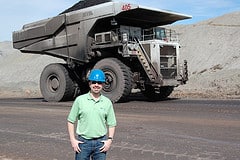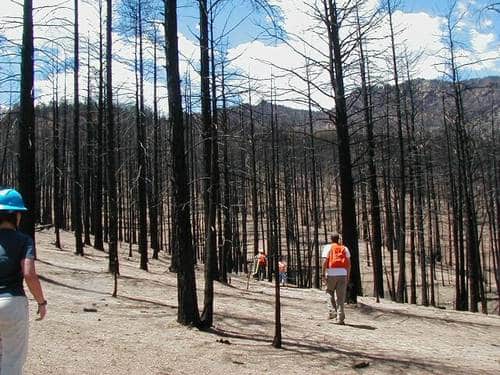David Beebe said, in a comment here on this previous post:
“Perhaps vested interests aren’t the best sole source for getting to the heart of the science on this matter without at least including contrasting conclusions coming from perhaps more objective sources?
For instance, http://216.250.243.12/90scientistsletter.pdf”
Now I know some but not many of these “vested interests”. In fact, Jim Burchfield has posted on this blog. As far as I know, all scientists have vested interests in getting research funds. And if you know a lot about something, (say a bird species), you tend to think they are pretty important; hence you are never very objective. Maybe we ought to give up the mythology of the objective scientist and just slog through the claims and counterclaims using logic and practitioner knowledge and see how far we get.
So let’s examine the knowledge claims in this letter.
1. Replacement of fossil fuels with bioenergy does not directly stop carbon dioxide emissions from tailpipes or smokestacks. Although fossil fuel emissions are reduced or eliminated, the combustion of biomass replaces fossil emissions with its own emissions (which may even be higher per unit of energy because of the lower energy to carbon ratio of biomass). Agreed.
2. Bioenergy can reduce atmospheric carbon dioxide if land and plants are managed to take up additional carbon dioxide beyond what they would absorb without bioenergy
This isn’t the clearest statement. Plants will grow and absorb carbon. If the previous plants are removed and used for bioenergy, new plants will grow and absorb carbon equivalent to that released when the previous plants are burned. Are we saying the same thing here? Not sure.
3. Alternatively, bioenergy can use some vegetative residues that would otherwise decompose and release carbon to the atmosphere rapidly. I would add possibly “even more rapidly through fires.”
4. Whether land and plants sequester additional carbon to offset emissions from burning the biomass depends on changes both in the rates of plant growth and in the carbon storage in plants and soils. OK.
6. For example, planting fast-growing energy crops on otherwise unproductive land leads to additional carbon absorption by plants that offsets emissions from their use for energy without displacing carbon storage in plants and soils. Agreed but not many acres around that are unproductive but would also grow energy crops.
7. On the other hand, clearing or cutting forests for energy, either to burn trees directly in power plants or to replace forests with bioenergy crops, has the net effect of releasing otherwise sequestered carbon into the atmosphere, just like the extraction and burning of fossil fuels.
The other letter did not talk about replacing forests with bioenergy crops, or clearing forests. If it is thinning, that carbon would be released anyway when the suppressed trees ultimately die. I am not following this logic for thinnings, or for dead trees. If we take dead trees, they are replacing fossil fuels and the place they vacated will be sequestering carbon. By getting the dead guys out, they are also opening places for new plants to re-sequester faster.
These seem to be the main questions:
1. What biomass are you taking off the acres?
2. What would happen to the carbon if you didn’t remove some biomass?
3. What would happen to the carbon if you removed the biomass but didn’t use it for energy?
3. What is the difference if you did use it for bioenergy?
Let’s use an example.
You are doing a thinning in ponderosa pine to “restore to HRV” and/or for fuels reduction.
You can use the trees for energy to replace fossil fuels OR you can put them into wood products OR you can pile them and burn them.
If you put them into wood products, the carbon will be released more slowly than in the woods. But you would be using the gas for heavy equipment and transportation and electricity (coal?) at the mill, more transportation to the Home Depot, etc. However, at the Home Depot it would replace boards from Canada, which might presumably have the same gas to extract from the woods, maybe hydro for western mills (don’t know) and possibly more transportation.
If you put the trees into bioenergy, you would still have to haul somewhere or chip and haul. But should this be compared to, say, extracting natural gas? There seems to be plenty of hauling associated with that, including heavy equipment drilling, compressors, etc. Or our old friend coal. Say, on an open mine there are huge pieces of equipment moving overburden and coal around (see photo above) (compared to how much for a skidder per energy unit) , and it goes on a train to the power plant, if you are in Wyoming, at least.
In fact, the more you think about this (in our region, we are being litigated on both coal and natural gas impacts currently, but not bioenergy) the more it makes sense to not consider carbon any differently from any other environmental impact.
It makes sense to me to line them all up (carbon, particulates, development impacts, etc.) and then make the judgment about what is the best energy source .
A carbon-o-centric view of energy sources might be good for some things (like setting up carbon trading), but not so good for others (deciding on the least expensive, and impactful energy technology that helps put jobs in rural America, and lets us control our own energy destiny).








